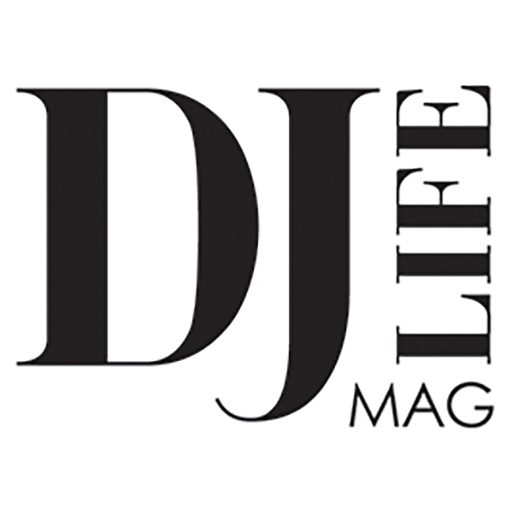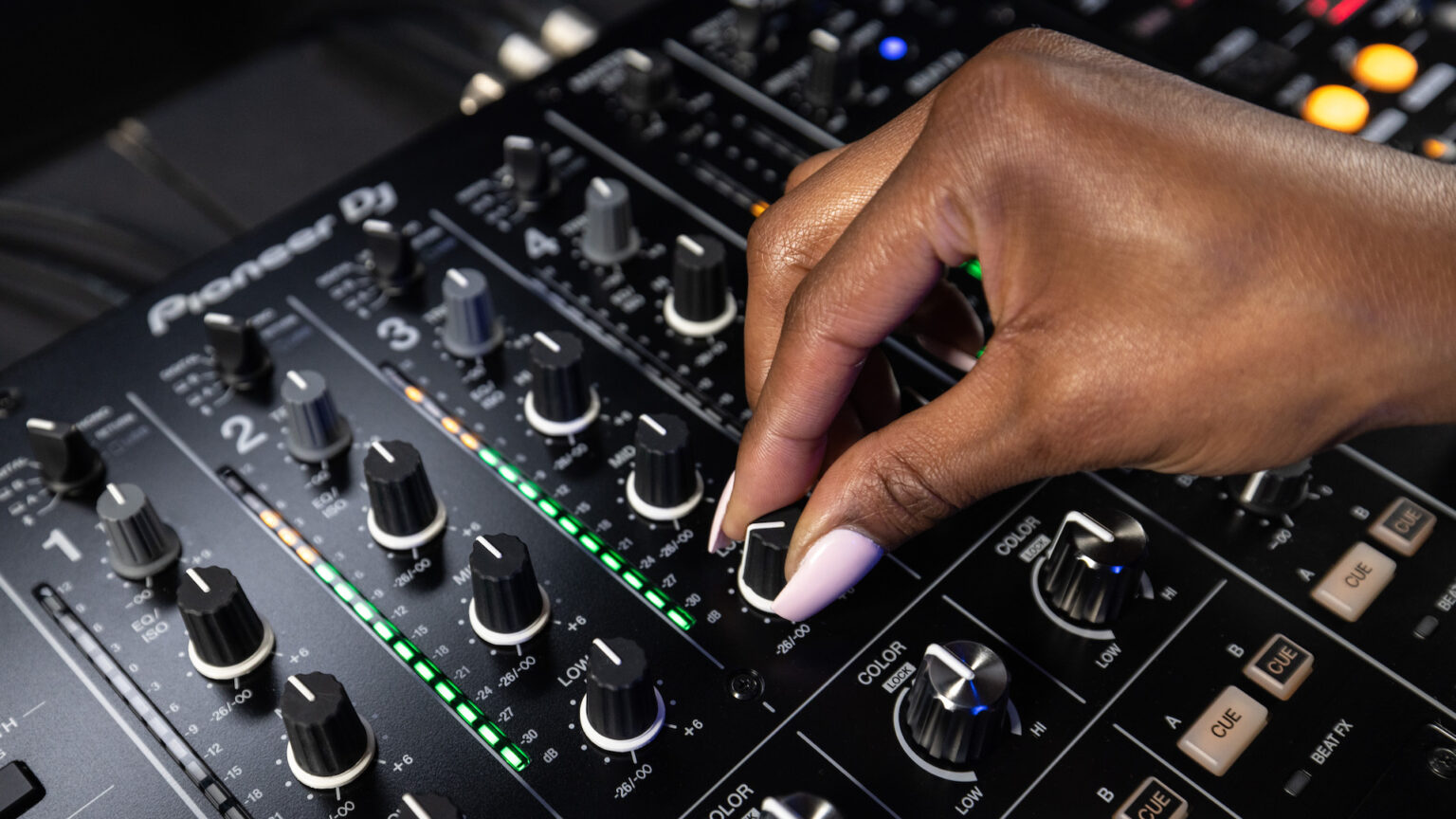“It’s one of the best mixers I’ve ever laid hands on, and that’s likely to remain true… at least until Pioneer DJ devises its successor.”
It’s hard for me not to look at a calendar these days and marvel at just how long I’ve been DJing and playing with DJ tech. Let’s just say it’s been long enough now that I think I’ve earned certified old-timer status. And as I look back, I continue to be amazed at just how much has changed about the art form and the gear we use to create it over all these years.
One thing hasn’t changed in all that time: The position of Pioneer DJ in the market. If you’re playing a leading venue, chances are that the house equipment bears the Pioneer DJ logo, and it continues to be the aspirational gear of choice for many a professional DJ – whether you’re performing on a stage, in a DJ booth at a venue, or setting up on a folding table to work your latest wedding gig. The centerpiece of many set-ups remains, of course, the mixer, and Pioneer DJ has recently rolled out a solid upgrade of its 4-channel flagship, called the DJM-A9.
This new mixer succeeds the ultra-successful DJM-900NXS2, which itself set a new standard when it debuted in 2016. But the DJM-A9 takes the staid notions of an old-school DJ mixer and injects a healthy dose of steroids that elevate things to a new level.
What’s New?
Pioneer DJ seems to lead its talk track about the new mixer with the audio technology that’s gone into it, highlighting the A/D-D/A converters used (from ESS Technology), while also highlighting audio improvements to things like the mic inputs and headphone outputs. Candidly, I’m not sure that these improvements are necessarily noticeable over the DJM-900NXS2 given that mixer’s top-drawer capabilities, but I’ll take them at their word.
I think, for me, the real story here is around the source flexibility of the DJM-A9. For a start, Pioneer DJ put both older style USB Type-B and newer Type-C ports on the unit in a dual configuration, allowing you to have two Mac or Windows computers (running Pioneer DJ’s own rekordbox software, or Serato DJ Pro) connected at the same time, either for flexibility or for DJ-set handoffs.
Add to that new Bluetooth capabilities, which open the door to novel wireless connections like using a smartphone as a source, and it begins to feel like the DJM-A9 lets you hook up anything you might ever need or want to incorporate in your DJ set — largely because that’s exactly what it offers.
It’s clear the sort of environment that Pioneer DJ designed the DJM-A9 to reside within, given various and sundry other niceties, including such things as dual, individually controlled headphone outputs (again, great for DJ handoffs); EQ adjustments on the booth output; new effects for those already offered previously for the microphone inputs; and even the ability to use a condenser mic with phantom power. On that last point, I’m not sure I can see delicate condenser mics being used in a DJ booth, but perhaps my old timer status is causing some “use-case myopia” here. There are other applications beyond the booth, of course. (From Pioneer DJ: Phantom power for condenser mics serves two purposes. One, it allows the DJM-A9 to be used in a broadcast or streaming environment, where DJs may prefer using a condenser microphone. Secondly, it gives DJs the option to use the DJM-A9 as a recording interface with a proper studio microphone. This gives DJ/producers the ability to take advantage of the high-quality converters, not just in a live performance, but it in a recording environment as well. This is also why there are dedicated effects just for the microphone.)
Further evidence of the environment it was designed for? The new Stagehand capabilities that are at this writing are still labeled as “coming soon.” It allows a front-of-house team to tap into the mixer in various ways, enabling an audio engineer, for example, to better control the sound. (Given how many DJs seem to live the “dial-it-up-to-max” philosophy, this may be a very good thing.)
Of course, as I implied above, it goes without saying that the back panel of the DJM-A9 offers an almost ridiculous number of connection points, not just for inputs and outputs, but also for effects send and return, the dual mic inputs — one ¼-inch TRS, and one dual XLR/TRS — and for the Pro DJ Link RJ-45 connector.
Pioneer DJ has also bestowed other improvements upon the DJM-A9. These include even more effects controls, but also basic usability improvements like a center-lock position on the Sound Color FX controls, as well as the simple addition of more space around the EQ knobs so your fingers are less likely to bump levels you’re not trying to adjust.
Hands-On
So how is it, hands-on? I’ll start by saying that testing a mixer like the DJM-A9 to its absolute fullest within the limited time typically provided to a reviewer is a near impossibility, but I did what I could, and I can very easily cut right to the chase: It’s extremely difficult to find fault with the DJM-A9. Pioneer DJ has been at this game for a long time, and dare I say, its engineers knows how to make a mixer targeted to the high end of the market, and they do it well.
Honestly, it seems gratuitous, perhaps even insulting, to try and grade the way that the DJM-A9 feels. All the controls are exceptional, responsive, and solid under the fingers — just as you might expect of any product made by this brand.
One thing worth mentioning is that, while Bluetooth connectivity is a massive plus and something many a DJ will avail themselves of, it does raise the issue of contending with a bit of signal latency — which, while not extreme, is nevertheless present. Depending on how you’re using or controlling the source itself (e.g., your smartphone), that may or may not be a big deal, and certainly Pioneer DJ can’t really circumvent the laws of physics here; it comes with the Bluetooth territory.
In any case, the DJM-A9 is clearly a solidly built, great-sounding piece of kit that uses some of the best components available, all packaged in an extremely robust tank-like cabinet. It’s big — over 18-inches deep, over 16-inches wide, and standing just over 4-inches tall. But part of my sense of its bigness comes from its sheer weight: nearly 23 pounds. That said, the several dozen knobs, buttons, connectors, sliders, and faders that make the top panel look like the inside of a Boeing cockpit, plus almost 40 connectors on the back panel, and all the circuits to make this thing work, aren’t going to add up to something you can pick up with one hand.
Beyond the weight, of course, is the cost: $2,699. But we’ve already established that the DJM-A9 isn’t for amateurs, and it’s probably not even the ideal choice for the majority of mobile DJs (although its features would surely appeal to them all). But for the type of customer that Pioneer DJ is catering to with the new DJM-A9, I dare say that they’ve hit a home run. It’s one of the best mixers I’ve ever laid hands on, and that’s likely to remain true… at least until Pioneer DJ devises its successor in a few more years.


